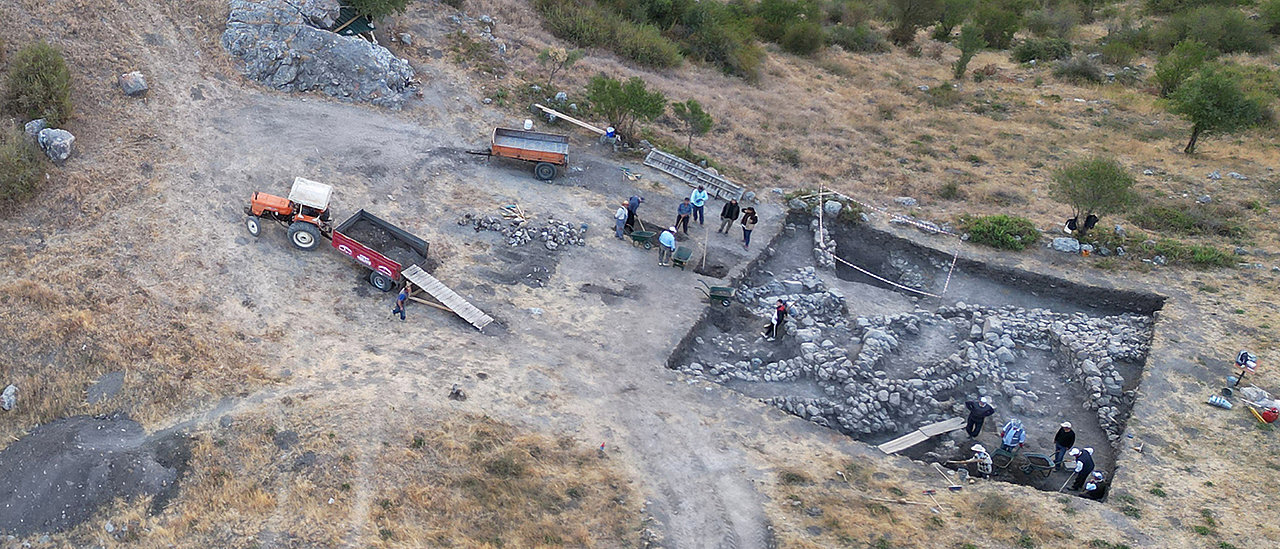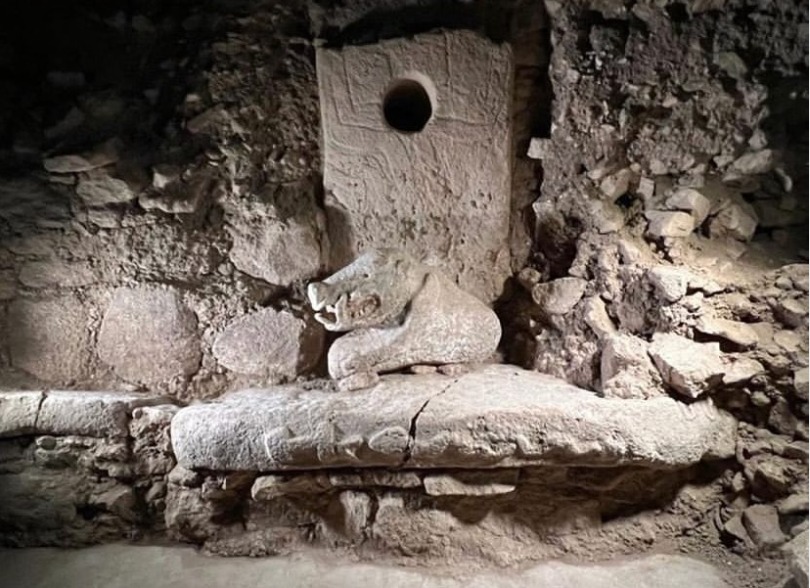Excavation works in Turkey’s UNESCO World Heritage Site Boğazköy-Hattusha in north-central Turkey, which was once the capital of the Hittite Empire, one of the great powers of Western Asia during the Late Bronze Age (1650 to 1200 BC), led to a discovery of an ancient Indo-European language.
Excavations in Boğazköy-Hattusha have been going on for more than 100 years under the direction of the German Archaeological Institute. The site has been a UNESCO World Heritage Site since 1986; almost 30,000 clay tablets with cuneiform writing have been found there so far. These tablets, which were included in the UNESCO World Documentary Heritage in 2001, provide rich information about the history, society, economy and religious traditions of the Hittites and their neighbours.
Yearly archaeological campaigns led by current site director Prof. Andreas Schachner of the Istanbul Department of the German Archaeological Institute continue to add to the cuneiform finds. Most of the texts are written in Hittite, the oldest attested Indo-European language and the dominant language at the site. Yet the excavations of this year yielded an unexpected surprise. Hidden in a cultic ritual text written in Hittite is a recitation in a hitherto unknown language. Epigraphist Daniel Schwemer from the University of Wurzburg in Germany identified the language as “a version of the language of Kalashma, which is believed to have been located in today’s Bolu or Gerede region, at the north-west end of Hittite territory,” the directorate said.
Over a century of excavations at Hattusha has yielded nearly 30,000 clay tablets with cuneiform writing offering valuable insights into the Empire’ history, society, economy and religious traditions.
According to Schwemer, “The Hittites were uniquely interested in recording rituals in foreign languages. Ritual texts written by scribes of the Hittite king reflect various Anatolian, Syrian, and Mesopotamian traditions and linguistic milieus. These rituals provide valuable glimpses into the little-known linguistic landscapes of Late Bronze Age Anatolia, where not just Hittite was spoken. Thus cuneiform texts from Boğazköy-Hattusa include passages in Luwian and Palaic, two other Anatolian-Indo-European languages closely related to Hittite, as well as Hattic, a non-Indo-European language. Now the language of Kalashma can be added to these.”
Being written in a newly discovered language the ‘Kalasmaic’ text is as yet largely incomprehensible. Schwemer’s colleague, Prof. Elisabeth Rieken (Marburg University), a specialist in ancient Anatolian languages, has confirmed that the idiom belongs to the family of Anatolian-Indo-European languages. According to Rieken, despite its geographic proximity to the area where Palaic was spoken, the text seems to share more features with Luwian. How closely the language of Kalasma is related to the other Luwian dialects of Late Bronze Age Anatolia will be the subject of further investigation.
Ancient languages and history
The discovery of a new language in the Bogazkoy-Hattusha archives is not entirely unexpected. According to Professor Schwemer, the Hittites had a unique interest in recording rituals in foreign languages. Ritual texts written by Hittite scribes reflect various Anatolian, Syrian and Mesopotamian traditions and linguistic contexts.
These rituals provide valuable insights into the lesser-known linguistic landscape of Late Bronze Age Anatolia (roughly from around 1600 to 1200 BCE), where Hittite was not spoken.
In fact, the cuneiform texts in Bogazkoy-Hattusha contain passages not only related to Hittite but also to two other Anatolian languages, Luwian and Palaic, a branch of the Indo-European language family, as well as a non-Indo-European language called Hattic, which was an ancient and poorly understood language and spoken in the region of Hatti, located in modern-day central Türkiye, Schwemer said.
The Kalasha [Kalasma] language can be added to this list.
“This discovery has the potential to make significant contributions to our understanding of ancient languages and history,” he added.
The recently discovered text remains largely incomprehensible. It is believed to belong to the Anatolian-Indo-European language family, but it shares more linguistic traits with Luwian than Palaic, despite geographical proximity, according to Professor Elisabeth Rieken, a specialist in ancient Anatolian languages.
Further research is needed to determine its relationship with other Luwian dialects in Late Bronze Age Anatolia, Rieken said.











